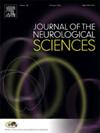用人工智能和情感计算改善肌萎缩侧索硬化症的护理
IF 3.6
3区 医学
Q1 CLINICAL NEUROLOGY
引用次数: 0
摘要
由于面部表情、言语、肢体语言和认知功能的损伤,ALS患者经常面临表达情绪的困难。本研究旨在开发非侵入性人工智能工具来检测和量化ALS患者的情绪反应,提供客观的见解。改善对情绪反应的理解可以加强医患沟通、远程医疗的有效性和临床试验结果的衡量。方法在这项初步的探索性研究中,14例ALS患者在常规就诊时佩戴无线脉搏血氧仪进行录音。随机询问与症状进展、呼吸、活动能力、饲管和经济负担相关的情绪触发问题。同样的问题也在单独的精神评估中提出。结合脉搏和语音数据,使用自然语言处理(NLP)分析转录、主题分类、情绪和情绪状态。人工智能生成的报告总结了这些发现。结果发现脉搏变化与情绪觉醒一致,长时间的咨询和积极的沟通减少了脉搏波动。经济问题引发了最强烈的情绪反应,而关于呼吸、活动和喂食管的讨论则增加了焦虑。人工智能生成的报告优先考虑了患者的担忧,并简化了提供者的文档。结论本研究引入了一种将脉搏和语言分析相结合的新方法来评估ALS患者的情绪反应。人工智能和情感计算为情绪反应和疾病进展提供了有价值的见解,并有可能应用于其他神经系统疾病。这种方法可以通过提供更全面的患者健康状况来增加临床试验结果。本文章由计算机程序翻译,如有差异,请以英文原文为准。
Improving care for amyotrophic lateral sclerosis with artificial intelligence and affective computing
Background
Patients with ALS often face difficulties expressing emotions due to impairments in facial expression, speech, body language, and cognitive function. This study aimed to develop non-invasive AI tools to detect and quantify emotional responsiveness in ALS patients, providing objective insights. Improved understanding of emotional responses could enhance patient-provider communication, telemedicine effectiveness, and clinical trial outcome measures.
Methods
In this preliminary exploratory study, fourteen patients with ALS had audio recordings performed during routine clinic visits while wearing a wireless pulse oximeter. Emotion-triggering questions related to symptom progression, breathing, mobility, feeding tube, and financial burden were randomly asked. The same questions were posed in separate psychiatric evaluations. Natural language processing (NLP) was used to analyze transcriptions, topic classifications, sentiment, and emotional states, combining pulse and speech data. AI-generated reports summarized the findings.
Results
Pulse alterations consistent with emotional arousal were identified, with longer consultations and positive communication reducing pulse fluctuations. Financial concerns triggered the strongest emotional response, while discussions about breathing, mobility, and feeding tube increased anxiety. AI-generated reports prioritized patient concerns and streamlined documentation for providers.
Conclusions
This study introduces a novel approach to linking pulse and speech analysis to evaluate emotional responses in ALS patients. AI and affective computing provide valuable insights into emotional responses and disease progression, with potential applications for other neurological disorders. This approach could augment clinical trial outcomes by offering a more comprehensive view of patient well-being.
求助全文
通过发布文献求助,成功后即可免费获取论文全文。
去求助
来源期刊

Journal of the Neurological Sciences
医学-临床神经学
CiteScore
7.60
自引率
2.30%
发文量
313
审稿时长
22 days
期刊介绍:
The Journal of the Neurological Sciences provides a medium for the prompt publication of original articles in neurology and neuroscience from around the world. JNS places special emphasis on articles that: 1) provide guidance to clinicians around the world (Best Practices, Global Neurology); 2) report cutting-edge science related to neurology (Basic and Translational Sciences); 3) educate readers about relevant and practical clinical outcomes in neurology (Outcomes Research); and 4) summarize or editorialize the current state of the literature (Reviews, Commentaries, and Editorials).
JNS accepts most types of manuscripts for consideration including original research papers, short communications, reviews, book reviews, letters to the Editor, opinions and editorials. Topics considered will be from neurology-related fields that are of interest to practicing physicians around the world. Examples include neuromuscular diseases, demyelination, atrophies, dementia, neoplasms, infections, epilepsies, disturbances of consciousness, stroke and cerebral circulation, growth and development, plasticity and intermediary metabolism.
 求助内容:
求助内容: 应助结果提醒方式:
应助结果提醒方式:


